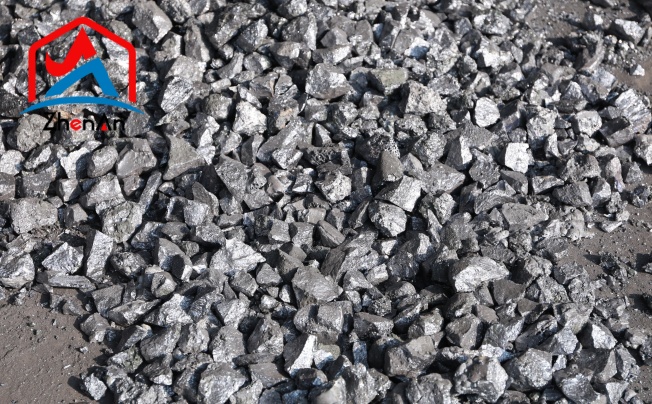Unveiling the Essence of Calcined Petroleum Coke (CPC)
Calcined Petroleum Coke (CPC), an essential carbon-based product derived from crude oil refining, stands as a cornerstone in various industrial applications. CPC undergoes a meticulous calcination process, wherein high temperatures and controlled environments transform raw petroleum coke into a versatile carbon material. This metamorphosis imbues CPC with exceptional properties, rendering it indispensable across diverse sectors, from aluminum smelting to steel production.
Significance Across Industries: Catalyst for Innovation
The significance of Calcined Petroleum Coke transcends its composition, resonating deeply within numerous industries globally. Its pivotal role in aluminum production, where it serves as a crucial carbon additive, underscores its indispensable nature.
Moreover, CPC finds application in steelmaking, where its high carbon content aids in achieving desired metallurgical properties. Beyond these core sectors, CPC's versatility extends to foundries, fueling thermal processes, and electrode manufacturing, where its conductivity enhances performance and efficiency.
Tracking Market Trends and Global Production Landscape
Navigating the labyrinth of the Calcined Petroleum Coke market necessitates a comprehensive understanding of prevailing trends and production dynamics worldwide. With evolving industrial landscapes and shifting consumer demands, the CPC market exhibits a dynamic character, influenced by factors ranging from geopolitical tensions to technological advancements. Mapping the global production landscape unveils a mosaic of producers, from established giants to emerging players, each contributing to the intricate tapestry of CPC supply and demand.
Technological Advancements and Process Optimization
Recent years have witnessed a remarkable surge in research and development efforts aimed at enhancing the calcination process to yield CPC of unparalleled quality.
One significant breakthrough lies in the refinement of calcination parameters, such as temperature, residence time, and heating rate, to achieve optimal levels of crystallinity, purity, and structural integrity in the final product. Researchers and industry pioneers are exploring novel calcination methods, including fluidized bed calcination, rotary kiln technologies, and hybrid processes amalgamating multiple techniques.
Fluidized bed calcination, for instance, offers advantages such as uniform heat distribution, enhanced mass transfer, and reduced energy consumption compared to conventional methods. Furthermore, advancements in reactor design and control systems have enabled precise regulation of process parameters, facilitating the production of CPC with tailored properties to meet diverse industrial requirements.
Empowering Precision: Utilization of Advanced Analytical Tools for Quality Control
Quality control is paramount in the CPC industry, where deviations in product specifications can have far-reaching repercussions on end-user applications and market reputation. In response to this imperative, manufacturers are increasingly leveraging cutting-edge analytical tools and techniques to scrutinize every facet of CPC production with unprecedented precision and accuracy.
Embracing the Future: Integration of AI and Automation in Production Facilities
The dawn of the Fourth Industrial Revolution heralds a new era of automation and intelligent manufacturing in the CPC sector. Artificial intelligence (AI) algorithms, coupled with sophisticated sensing and control systems, are revolutionizing production facilities, enhancing efficiency, productivity, and predictive maintenance capabilities.
From automated feedstock blending and process monitoring to real-time quality control and adaptive optimization, AI-driven solutions are reshaping the landscape of CPC manufacturing. Furthermore, the integration of Internet of Things (IoT) devices and cloud-based platforms enables seamless connectivity and data exchange across the entire production ecosystem, fostering transparency, traceability, and agility.
Future Challenges and Opportunities
Addressing Supply Chain Disruptions and Raw Material Availability
Navigating the future of Calcined Petroleum Coke (CPC) presents a myriad of challenges and opportunities, with supply chain disruptions and raw material availability at the forefront. The CPC industry heavily relies on a steady supply of high-quality petroleum feedstocks, such as heavy crude oil and bitumen.
However, geopolitical tensions, trade disputes, and fluctuations in oil prices have led to uncertainties in the availability and affordability of these raw materials. Additionally, the transition towards cleaner energy sources and the rise of electric vehicles pose long-term risks to the traditional petroleum industry, potentially impacting the CPC supply chain.
To address these challenges, stakeholders in the CPC sector must adopt a multifaceted approach. This involves diversifying the raw material base by exploring alternative sources such as shale oil, bio-based feedstocks, or even recycling options.
Furthermore, strategic investments in infrastructure and logistics networks can help mitigate supply chain disruptions by ensuring efficient transportation of raw materials to CPC production facilities. Collaboration with governments and regulatory bodies to streamline permitting processes and facilitate cross-border trade can also enhance supply chain resilience in the face of geopolitical uncertainties.
Market Expansion in Developing Economies and Emerging Industries
As the global economy continues to evolve, the CPC industry is presented with significant opportunities for market expansion, particularly in developing economies and emerging industries. Rapid urbanization, industrialization, and infrastructure development in countries across Asia, Africa, and Latin America are driving the demand for CPC as a crucial raw material in various sectors, including aluminum production, steelmaking, and energy generation. Furthermore, the emergence of new industries such as lithium-ion battery manufacturing and carbon fiber production presents novel applications for CPC, further augmenting its market potential.
To capitalize on these opportunities, industry players must adopt a proactive approach to market development and expansion. This involves conducting market research to identify key growth regions and industries, as well as tailoring product offerings to meet specific customer requirements.
Strategic partnerships and alliances with local distributors and suppliers can facilitate market penetration and provide insights into regulatory landscapes and cultural nuances. Moreover, investing in technological innovation and process optimization can enhance product quality and competitiveness, positioning CPC manufacturers as preferred suppliers in burgeoning markets.
Collaborative Efforts for Research and Development in CPC Sector
In the pursuit of a sustainable and prosperous future for the CPC industry, collaborative efforts for research and development (R&D) play a pivotal role in driving innovation and addressing industry challenges. With rapid advancements in materials science, catalysis, and process engineering, there exists immense potential for improving the efficiency, sustainability, and cost-effectiveness of CPC production and utilization.
Collaborative R&D initiatives involving industry consortia, academic institutions, and government agencies can foster knowledge exchange, leverage complementary expertise, and accelerate technology commercialization. Key areas of focus for collaborative R&D in the CPC sector include the development of novel catalysts and additives to enhance coke quality and reduce environmental emissions, as well as the exploration of alternative calcination techniques with lower energy consumption and carbon footprint.






